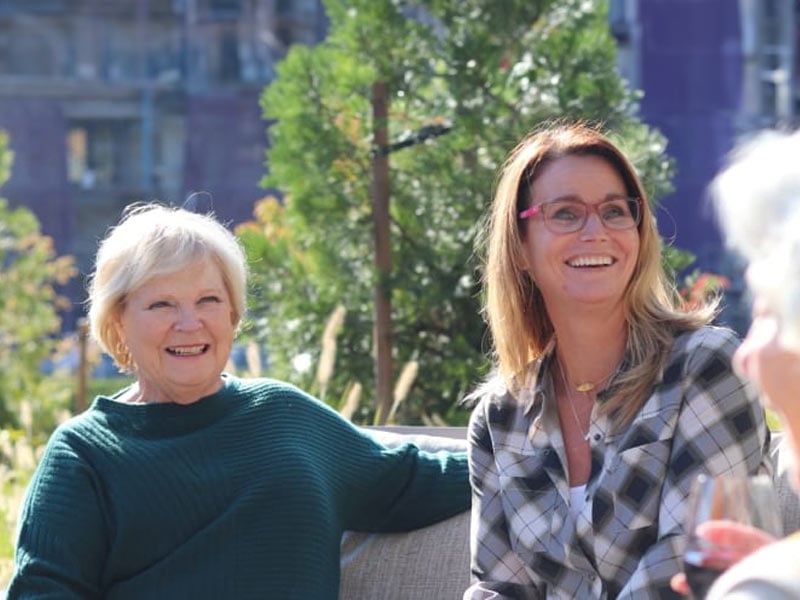When I walk the halls of the NIC Conference, I see ghosts. Memories of big personalities of past large company operators are still clear in my mind. Most of those fast growth companies are gone now, but do we have clarity about the lessons they provide?
One particular memory is of one CEO standing in the bar at the Sheraton Chicago with a line of people ten deep all waiting to sell him a building. At its peak, his company was buying on average one building per day. Maybe they simply outgrew their quality, which is a way of saying they added more buildings than they were operationally able to manage well? Likewise, gone are the days of Lyle Lovett, Jim Belushi, and KC and the Sunshine band private concerts. Gone are the themed receptions that felt more like Vegas than a financial meeting with shows of dancers moving provocatively behind a backlit curtain. Mild compared to most financial sector conferences of the 1990s and early 2000s, the NIC has smartly and thoughtfully responded to changing times. Leaders like Lynne Katzmann, Judy Marczewski, and Kelsey Mellard have nudged and sometimes shoved us in a new direction. DEI and ESG are now flags flown declaring new understanding, awareness of our responsibility, and commitment to all represented in our profession. And, of course, Bob Kramer is always poised to sound the charge of advancement by being the industry’s agent provocateur. Capital providers and operators have evolved in their awareness of changes in society, but have we evolved in our understanding of the cultural differences between each other? Do we really understand how to fulfill our promises to our customers — older adults?
The NIC has offered capital providers and operators the venue for our industry to evolve for the next generation. In my 26 years in attendance, I have seen our industry grapple with the question of organizational size. What is the right size of a quality operator? Twenty buildings, 40 buildings or 100? Since most of the “ghosts" I mentioned above were large national providers who prioritized scale over quality, have we generally come to think that quality cannot be achieved by these whales? All of these ghost organizations started out with a quality mission and were run by good folks, even friends of ours. So why, as they grew, did their quality decrease and, is it absolutely true that size determines quality?
I started The Springs Living in 1996, and by 2010, our company had outgrown our seed capital partner and was looking for institutional capital that could align with our new, bigger building concept of building rental CCRCs. We turned to a fairly new capital provider at the time called Harrison Street. Flying from Portland to Chicago to meet with one of Harrison Street's founders, former Motorola CEO, Chris Galvin, I had all the numbers memorized expecting to get grilled about financials. After pleasantries, in a conference room at their headquarters on Wacker Drive, Mr. Galvin volleyed the first question. “Tell me about your culture.” I was confused, why didn’t he ask me about my NOI margin? Fortunately, the answer came naturally for me, and I explained my “why.” Obviously satisfied with the answer, he transitioned to the next question. “How big do you want to grow?”
I had seen some large senior housing companies fail and did not think most were capable of producing a place where I would want my family to live, or myself for that matter. I answered, “Not very big because senior housing is not a big company business.” Mr. Galvin grinned a little bit before challenging my statement. “It’s not about the size of the organization,” he said, “it’s simply that your industry has not yet figured out its limiters.” That statement stuck and has driven my ongoing obsession to figure out our industry's limiters.
One of those limiters may be our understanding of the differences between organizational cultures. Not just our individual organization’s culture, but the underlying industry cultures of the stakeholders needed to meet the customer demand. I am talking about the culture of capital and the culture of operators, who each see the world through different lenses…I am proposing we may be limited by lack of clarity between the culture of capital and the culture of operators. Not sure what I just said? That is exactly my point.
Senior housing operators and senior housing capital providers may be like sugar is to salt. Both need each other to meet the needs of the customer, but their composition is vastly different. The Schneider Cultural Model may offer some insight to the differences. This model proposes that operators are cultures of “cultivation,” and capital are cultures of “control.” Operators are all about purpose, belief, and value to name a few clarifying characteristics. Capital is about predictability, order, capacity and, of course, returns. Try justifying a pro forma to a capital provider based on a “belief” if you can’t hit their target IRR. If you’re an asset manager, try telling an operator they need to stick to the “policy” instead of care for their residents. Schneider’s cultural model just may offer some clarity, and, as an industry, we must get better at understanding how to deliver quality. After all, if an organization grows, shouldn't it have more resources? If it has more resources, it should be able to make life better for residents as well as the employees, and that should produce better risk adjusted returns for capital. The ability to deploy capital faster than organizations can grow quality plagues our industry, and, if we don’t learn the lessons from the organizational ghosts of the past, we are destined to repeat history. It seems it’s easier to talk investment committees into committing funds to real estate than it is to fund operational infrastructure that will help us give our customers the care they want as well as the returns investors need.
Emerging out of COVID is our industry’s chance to reinvent ourselves, to change our paradigm, and be the organizations that our customers need. Seventy million baby boomers are counting on us to get this right. To do that, we need to work together to meet the needs of our customers and employees. As a profession, the public perceives us as only as good as the lowest quality operation in our market. More than enough demand exists to fill all of our buildings if we offer the quality that folks want and need. It is time to change the recipe and have a conversation around our limiters and our differences so we can invest in quality and grow together. The foodies of the world have shown us how amazing the combination of a little salt with a little sugar can be. Different ingredients when blended wisely can yield satisfying and sustainable results. Likewise, a clear cultural understanding between capital and operations can help us fulfill our promise to our customers, and those customers will be us someday. I believe the best days of senior housing and care are ahead; 70,000,000 people are counting on it.
About Fee Stubblefield
Fancho “Fee” Stubblefield, Jr. is the Founder and CEO of The Springs Living, an owner, developer, and operator of senior living in the Pacific Northwest. Founded 27 years ago, The Springs Living’s goal is to be an innovator of quality. Fee’s upcoming book, ’Shine, reveals an entrepreneur's story of growing an organization and a brand and will be released by Forbes Books in 2023. Fee serves as the Chair of NIC’s Operator Advisory Board and also is a member of NIC’s Board of Directors.












